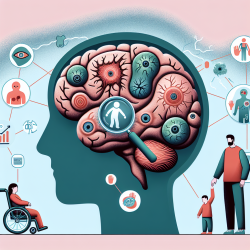Understanding Unilateral Hearing Loss in Children
As a practitioner working with children who have hearing impairments, understanding the nuances of congenital unilateral hearing loss (UHL) is crucial. A recent study published in Frontiers in Pediatrics provides insights into the audiological characteristics of children with UHL, focusing on the age of reliable behavioral audiogram acquisition and changes in hearing loss over time.
Key Findings from the Study
The study involved 91 children diagnosed with UHL through newborn hearing screening. It was observed that 52.7% of these children had their first reliable behavioral audiogram by the age of three. However, a significant portion experienced hearing deterioration between the initial diagnosis and the first audiogram.
One of the critical findings was that 78% of children showed a decrease in hearing levels at one or more frequencies between 0.5 and 4 kHz. This highlights the importance of continuous monitoring and timely intervention to address progressive hearing loss.
Practical Implications for Practitioners
For practitioners, these findings underscore the need for regular audiological assessments for children with UHL. Early identification of hearing changes can lead to timely interventions, such as hearing aid fittings or other assistive technologies, to support the child's development.
- Regular Monitoring: Schedule frequent audiological evaluations to track changes in hearing thresholds.
- Parental Engagement: Educate parents about the importance of early and consistent monitoring of their child's hearing.
- Intervention Strategies: Develop personalized intervention plans based on the child's specific audiological profile and needs.
Encouraging Further Research
While this study provides valuable insights, it also opens the door for further research. Understanding the etiology of UHL and the factors contributing to hearing deterioration can enhance intervention strategies. Practitioners are encouraged to stay informed about ongoing research and advancements in audiological assessments and interventions.
Conclusion
The study emphasizes the importance of early and reliable behavioral audiograms in managing UHL in children. By implementing regular monitoring and timely interventions, practitioners can significantly impact the developmental outcomes for children with UHL.
To read the original research paper, please follow this link: Audiological characteristics of children with congenital unilateral hearing loss: insights into Age of reliable behavioural audiogram acquisition and change of hearing loss.










